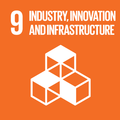KiWi Power offers a way to commercialize the demand side response market in the United Kingdom and electricity markets around the globe.
KiWi Power reduces peak power consumption by increasing demand side response. Peak power reserves are deployed at times of high demand, typically less than 100 hours annually. This extra strain on the grid is rare but has to be effectively managed. KiWi Power provides an alternative to polluting and expensive power reserves, which are often the oldest and dirtiest power plants. The technology aggregates non-essential power, such as air-conditioning across many businesses, without compromising operational efficiency. The result is a demand reduction strategy that reduces customers’ electricity consumption slightly during times of peak demand.
As it costs the grid less to utilise demand side response than turn on more power stations in the UK, KiWi Power’s customers receive payouts from the National Grid, as well as improved green credentials, and better energy intelligence.
Why you should care
With variable renewables – particularly wind and solar – penetrating the electricity market more and more, the grid operators face a challenge of keeping the system balanced at all times and especially when demand is high. Using demand side response rather than having large and dirty reserves of power on standby is a cleaner, more efficient and cheaper solution to the challenge.
How the Global Goals are addressed

Industry, Innovation, and Infrastructure
By 2050 electricity demand is set to double as more energy consuming devices are integrated to existing grids. This solution helps make grid infrastructure smart and responsive.

Climate Action
Demand side response is estimated to be able to cut annual emissions by 2% throughout the UK, that’s roughly 20 million tons of CO2 at current usage rates.


